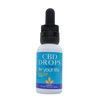Discover Our Top CANNAFYL CBD Products
Revolutionizing Wellness:
Understanding CBD
CBD, one of over 100 cannabinoids in Hemp and Cannabis, interacts with the body's Endocannabinoid System to regulate functions like sleep and temperature. Legalized in the U.S. by the 2018 Farm Bill, CBD is derived from 100% Industrial Hemp.

Why Choose CANNAFYL
Choose CANNAFYL for a holistic approach to wellness. Our CBD products are crafted with care, ensuring the highest quality and effectiveness. All day relief for Golfers and Pickleball players shows the CANNAFYL difference.
The CANNAFYL CBD Difference
CANNAFYL ensures the highest CBD quality with rigorous testing and 100% transparency, offering a superior, independently-verified, full-spectrum product.
Our commitment to your health and well-being sets us apart in the CBD market. Choose us for a trusted, customer-focused experience.

Explore Solutions Just for You
How Can We Make Your Day Better Today?

Dedicated Support and Swift Delivery Across the US
Experience the convenience and efficiency of CANNAFYL's fast delivery service. Our team is here to help you achieve the best experience both with our website and our CBD products.
Need Assistance? Connect with Us Anytime!
We're eager to help, whether it's via phone, chat, or email!
Email Us: info@cannafyl.com
Join the CANNAFYL Wellness Revolution
Dive into our world of premium CBD products designed for your holistic health. Discover why our customers trust us for their daily wellness needs.
From Our Customers' Hearts
Your Source for CBD Wisdom
Dive Deep into CBD Knowledge: Trends, Tips, and Transformative Insights




















